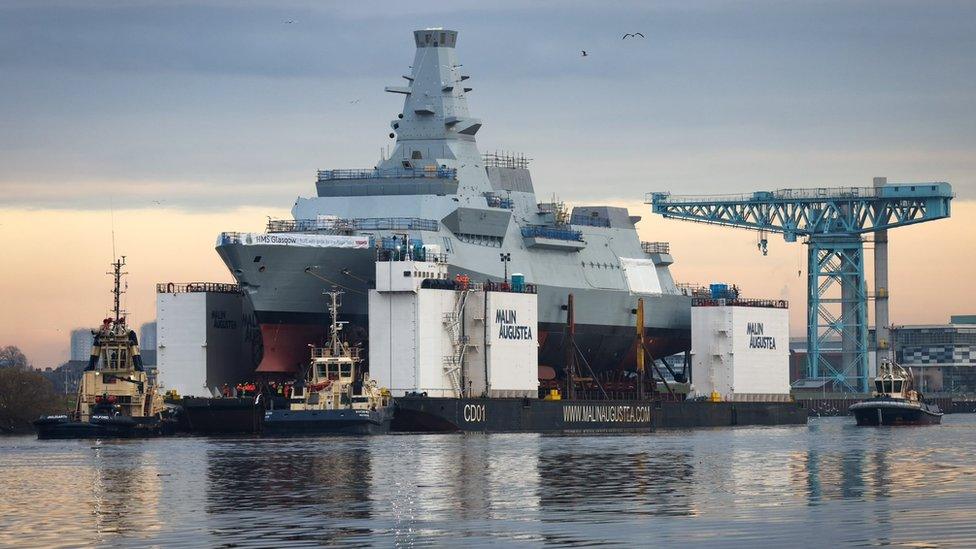New Navy frigate makes first journey on giant barge
Watch: Royal Navy frigate floated under Erskine Bridge
- Published
The Royal Navy's newest Type 26 frigate has made its first journey down the River Clyde, carried by a giant barge.
HMS Cardiff is the second of eight anti-submarine warfare ships being constructed at the BAE Systems Govan shipyard in Glasgow.
The semi-submersible barge will carry the 150m (492ft)-long ship to a deep water site in the west of Scotland. It will be gently lowered into the water for the first time on Monday.
The £1.2bn warship will then be towed back upriver to BAE's Scotstoun site where "fitting out" work will continue to prepare the ship for delivery.
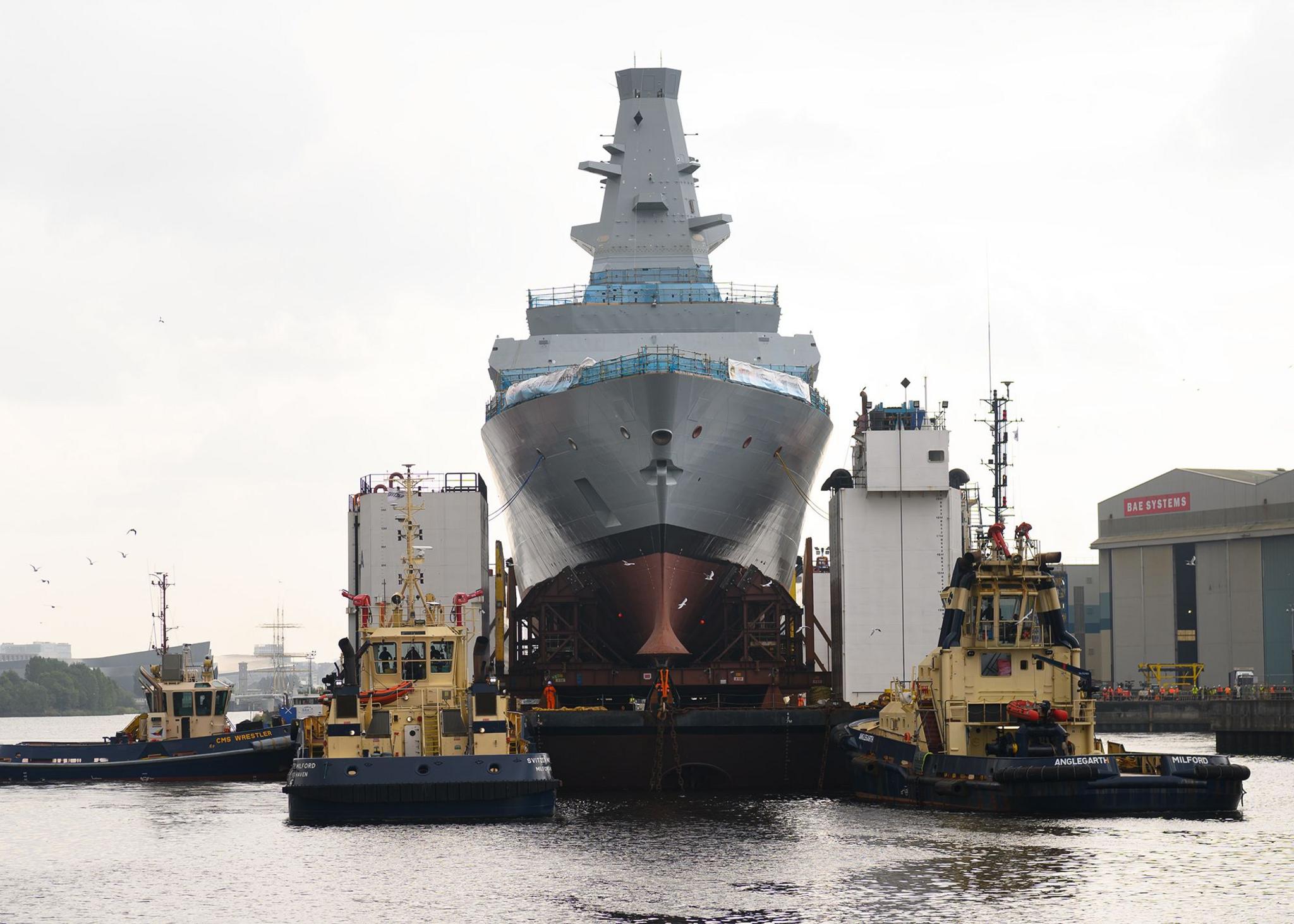
HMS Cardiff, leaving the Govan shipyard where it was built
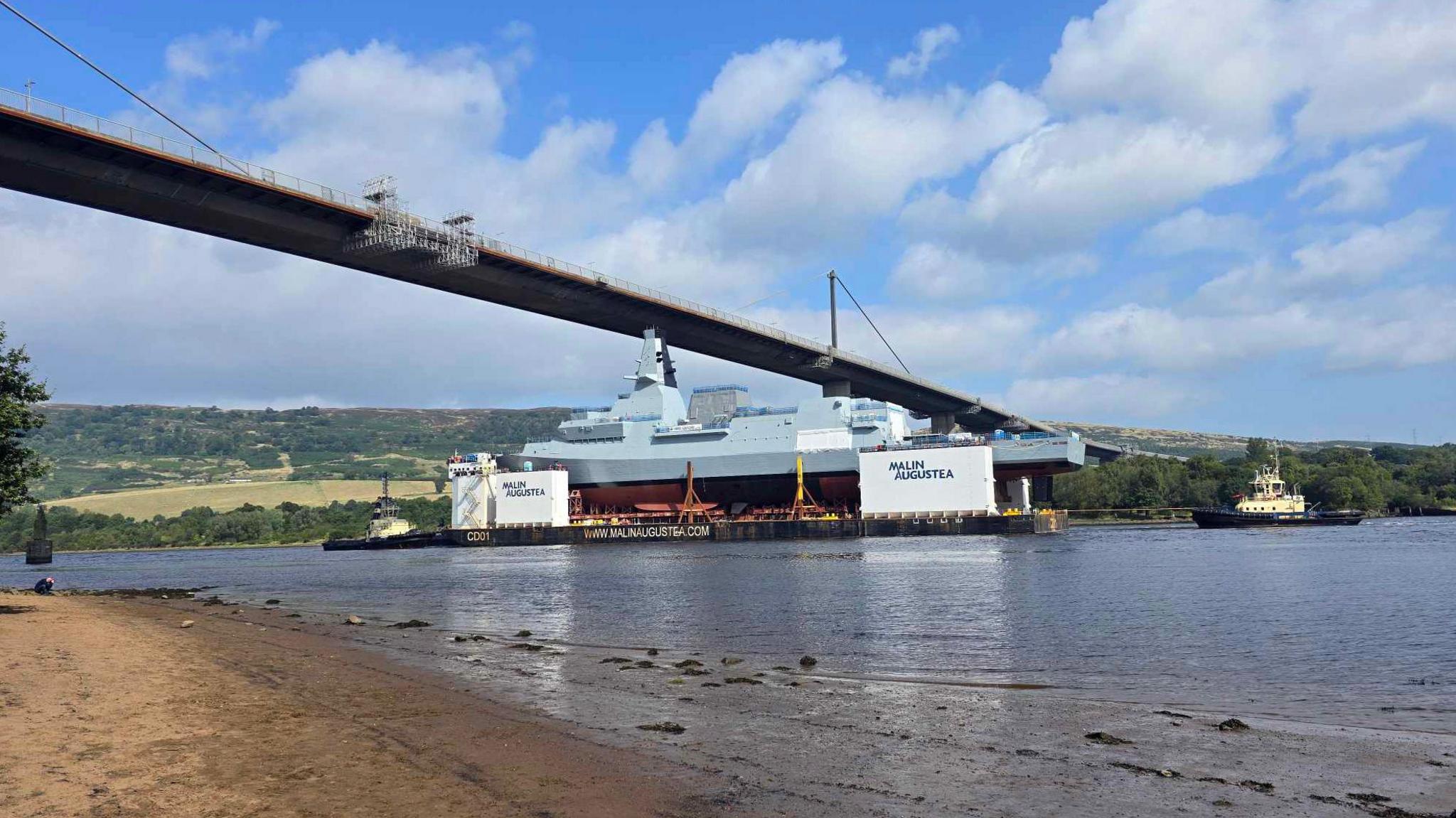
The journey was made at low tide so the ship could pass safely beneath the Erskine Bridge
David Shepherd, Type 26 programme director at BAE Systems, said it was a proud moment for thousands of people who had been involved in the ship's construction.
"The Type 26 has awesome and world-leading capability and we’re looking forward to installing HMS Cardiff’s complex systems and bringing her to life," he said.
BAE Systems abandoned traditional "dynamic" slipway launches on the Clyde 14 years ago in favour of the "float off" method.
The technique is more controlled and allows the vessel to be launched in a more complete state.
The first of the "City Class" Type 26 frigates, HMS Glasgow, was launched this way in late 2022.
Both HMS Glasgow and HMS Cardiff were built in sections with the forward and aft ends then joined together on the hardstanding beside the river.
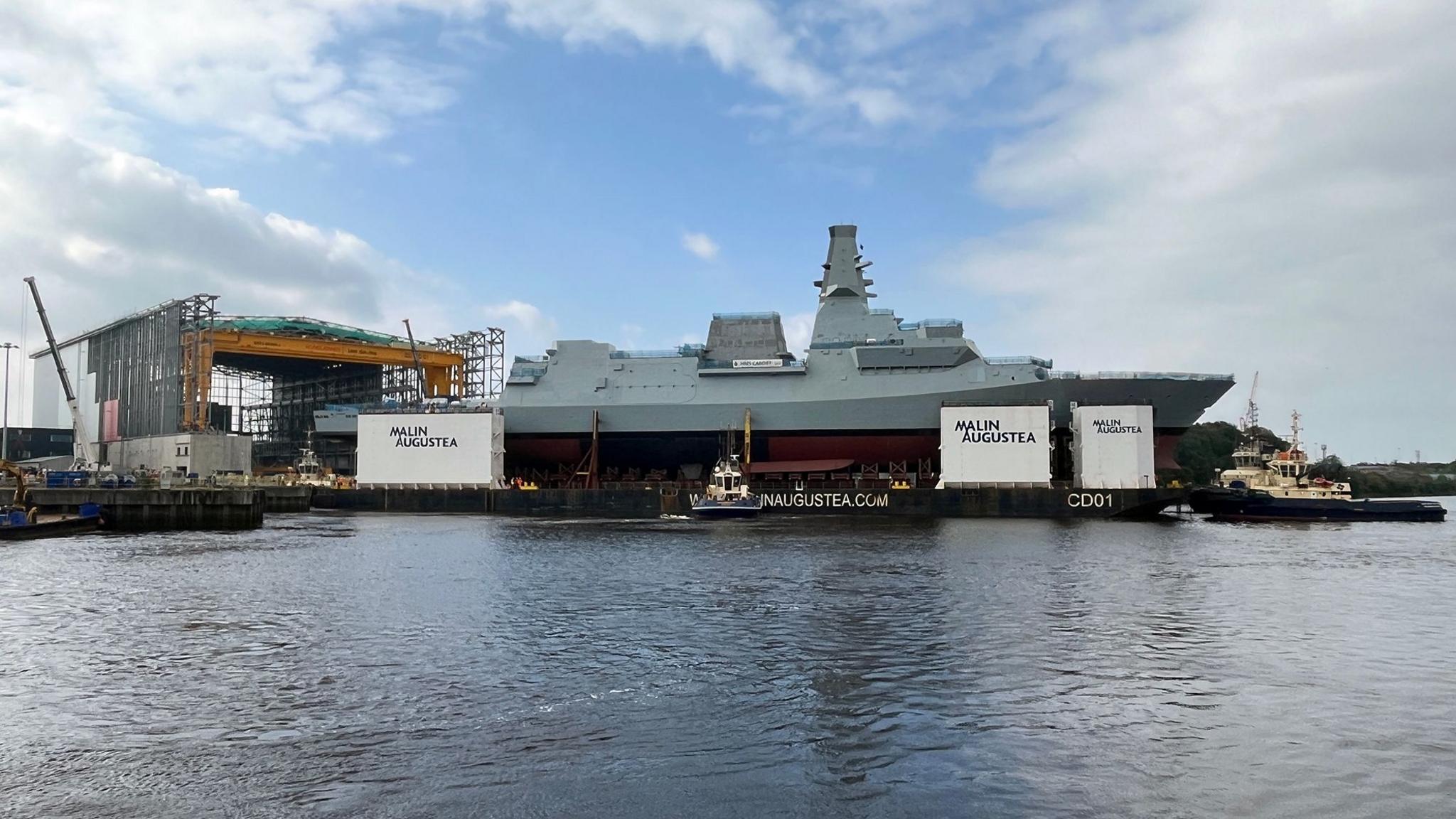
HMS Cardiff with the new Govan shipbuilding hall in the background
Future vessels will be assembled within a huge new shipbuilding hall - dubbed a "frigate factory" - which is being built at the Govan shipyard.
The Janet Harvey building - named after a pioneering female apprentice who started work at the site during World War Two - is large enough to accommodate two Type 26 frigates side-by-side.
A new generation of Clyde shipbuilders are also being trained at a £12m shipbuilding academy that recently opened at Scotstoun.
Early steel fabrication work has started on the next ships, HMS Belfast and HMS Birmingham, at the Govan site.
The eight Type 26 frigates are expected to enter service between 2028 and the mid-2030s. Their role will include protecting the aircraft carriers and Trident submarines.
The 137m (9,449ft) barge carrying HMS Glasgow is jointly owned by Scottish marine engineering firm Malin and Italy's Augustea and is one of the largest in Europe.
As well as transporting ships, it is used for moving equipment for the oil, gas and renewables sector.
The journey was timed so that the barge and its 6,000 tonne cargo were able to pass safely beneath the Erskine Bridge, which was temporarily closed.
Fitting out work on the first Type 26 frigate HMS Glasgow continues at BAE's Scotstoun shipyard, on the opposite bank of the Clyde.
All of the Royal Navy's complex surface warships are currently being built in Scotland, with five Type 31 frigates also being constructed at the Babcock shipyard at Rosyth.
Related topics
- Published6 April 2024
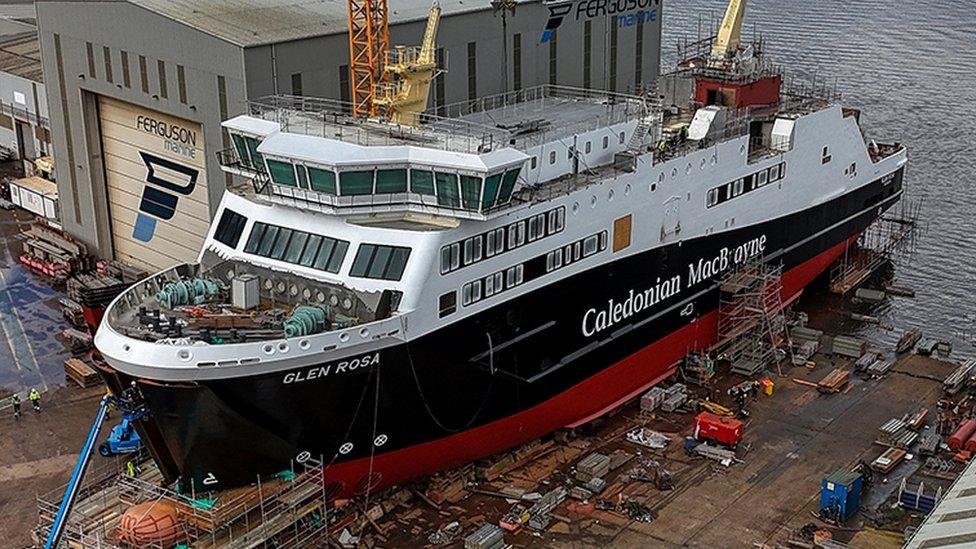
- Published1 December 2022
